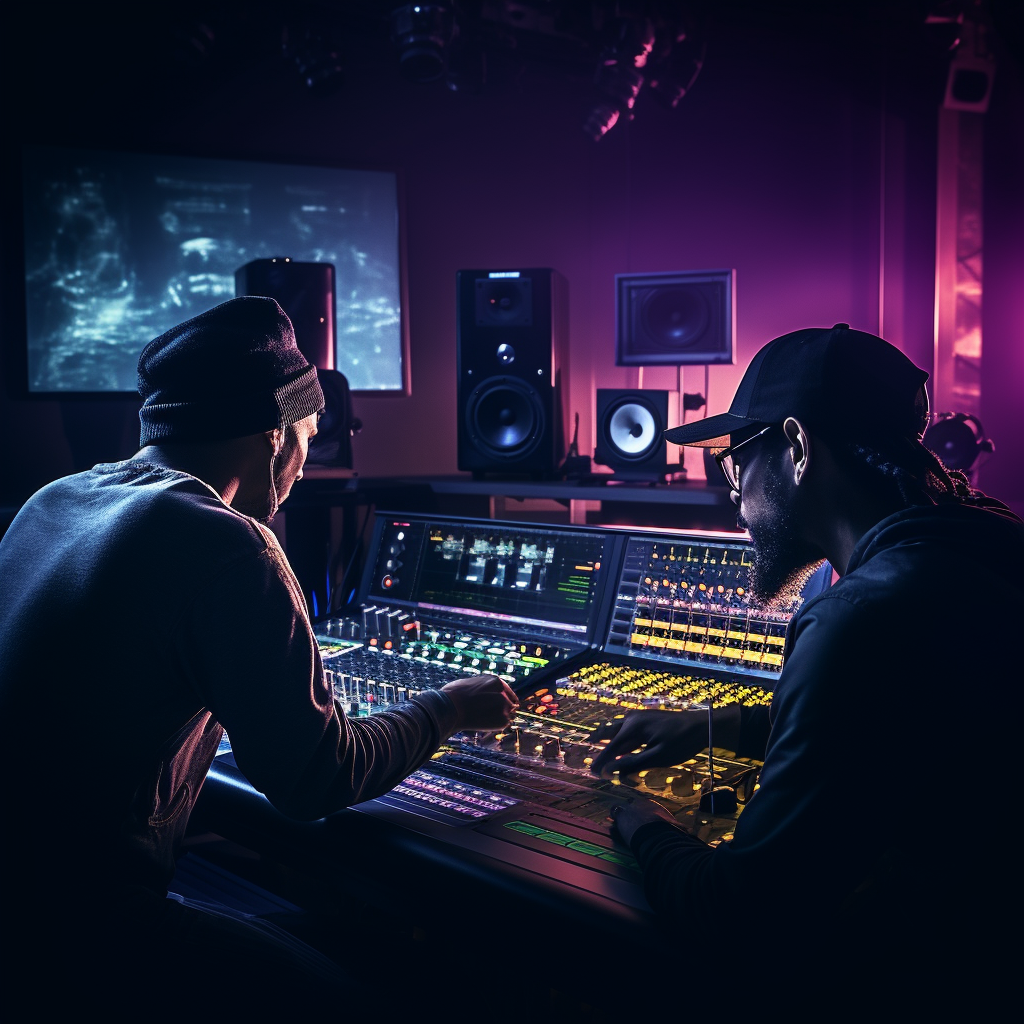Communicating with Your Audio Engineer
When you step into the studio or send off your tracks for mixing and mastering, knowing how to articulate your ideas can make a world of difference. Here’s how to speak audio engineer:
- Be Specific: Instead of saying, “Make it sound warm,” you might say, “Can we boost the lower mid-range frequencies to add warmth?”
- Refer to Influences: Sharing tracks that capture the vibe you’re aiming for can be incredibly helpful. Mention specific elements like the punchiness of the drums or the clarity of the vocals.
- Understand the Process: Familiarize yourself with the basic steps of mixing and mastering. Knowing what’s possible and what’s not will set realistic expectations.
Glossary of Common Audio Engineering Terms
- EQ (Equalization): Adjusting the balance between frequency components within an audio signal.
- Compression: Reducing the dynamic range of an audio signal by making loud sounds quieter and quiet sounds louder.
- Reverb: An effect that adds echoes to create the illusion of sound being in a space, from small rooms to large halls.
- Delay: An effect that plays back an audio signal after a short period of time, often used to create echo effects.
- Panning: Distributing a sound’s position in the stereo field, from left to right.
- Gain: The level of input signal to any audio processing unit or the increase in audio signal strength.
- Limiting: A type of compression that strictly prevents audio from exceeding a certain volume, essential in mastering to maximize loudness without clipping.
- Saturation: Adding warmth and character by emulating the distortion characteristics of analog tape or tube amplifiers.
- Clipping: Distortion that occurs when the signal level exceeds the maximum limit of a device or audio format.
- Mono vs. Stereo: Mono signals are single-channel, typically centered, while stereo involves two channels (left and right) for a wider sound.
For more terms, visit our Glossary.
Understanding these terms and concepts not only helps in communicating your artistic vision but also empowers you to make informed decisions throughout the production process. Remember, a successful mix and master is a collaboration between the artist and the engineer. The better you can articulate your ideas, the closer you’ll get to realizing your sonic dreams. Happy recording!
FAQ’s
Q: What should I do to prepare for a recording session?
A: Preparation is key to a successful recording session. Make sure your songs are well-rehearsed, your instruments are tuned, and you are vocally warmed up. Additionally, bring any necessary equipment, such as instruments, cables, or specific effects pedals you prefer. It’s also helpful to have a clear vision or goal for the session discussed with your producer or engineer beforehand.
Q: How long does a typical recording session last?
A: The length of a recording session can vary greatly depending on the complexity of the project. A single song might take anywhere from a few hours to a full day, while recording an album can take several days to weeks. It’s best to discuss your project in detail with your engineer to get a more accurate estimate.
Q: What is the difference between mixing and mastering?
A: Mixing is the process of blending all the individual tracks in a recording to create a version of the song that sounds as good as possible—the levels, EQ, reverb, and other effects are adjusted during mixing. Mastering is the final step before a song is released, which involves polishing the mixed audio by enhancing the overall sound, ensuring consistency across the album, and preparing it for distribution.
Q: Can I attend the mixing and mastering sessions?
A: This depends on the studio and the engineer’s policy. Some engineers prefer to mix alone to maintain focus and efficiency, while others welcome the artist’s input during the session. It’s always a good idea to discuss this with your engineer beforehand.
Q: How can I give feedback on a mix or master?
A: Feedback is crucial, but it should be constructive and specific. Listen to the mix or master on several different audio systems (car, headphones, home stereo, etc.) to get a good idea of how it sounds in various environments. Be specific about any changes you want—such as adjusting the bass levels, vocal reverb, etc.
Q: What file formats will I receive my final mix and master in?
A: Typically, mixes are provided as WAV files, which offer high-quality sound. Masters can be delivered in various formats depending on your distribution plans. Common formats include WAV for CDs and high-resolution platforms, and MP3 or AAC for streaming services. Specify your needs to the engineer before finalizing the project.
Q: How many revisions am I allowed during the mixing and mastering process?
A: This varies by studio and engineer. Some may include a set number of revisions in their standard rate, while others might charge additional fees for extensive revisions. Clarify this with your engineer at the beginning of the process to avoid misunderstandings.
Q: What should I do if I’m not satisfied with the final product?
A: Communication is key. If you’re not happy with the final mix or master, discuss your concerns clearly and politely with the engineer. Describe what you’re hearing and what you would like to be different. Most professionals will be willing to make adjustments to achieve a better result.
